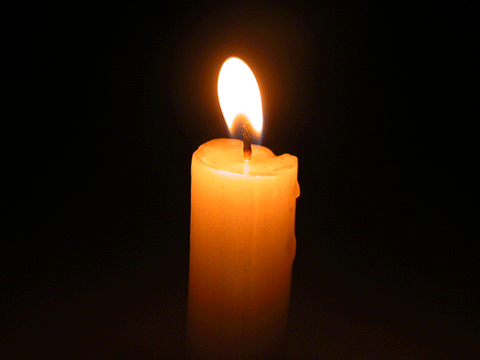Jesus is waiting -
He waits for you with love -
you are never alone
Only in God.com
Catholic Truth Online

Jesus Christ
The Light of our World
always burning for you and me
The Sacrament of The Eucharist
The Eucharist is one of the three Sacraments of Initiation.
The Eucharist can be received by the laity (the people of God) once per day. The Eucharist is called the “Sacrament of Sacraments” because we receive the greatest gift that God the Father has to offer the world: the gift of His Only Begotten Son, Jesus Christ. The best description of the Sacrament of the Eucharist is: the Body, Blood, Soul, and Divinity of Jesus Christ. When we receive the Eucharist, we receive Christ Himself. Because the Eucharist is the “Real Presence” of Jesus Christ, it is called the “Bread of Life.”
In the Eucharist, we receive the Bread of Eternal Life: the Body and Blood of Jesus Christ. When we receive the Sacrament of the Eucharist, we take Christ into our body and, at the same time, Christ takes us into His Body. Hence the Eucharist unites us all together as the living Body of Christ on earth. Therefore, the Eucharist is correctly referred to as the “Sacrament of Unity.” The Catechism of the Catholic Church reminds us that the Eucharist is “the true sacrifice that makes present the one sacrifice of Christ on Calvary “ (CCC 1330).
Eucharist - Catholic Catechism
The Sacrament of Eucharist produces the following effects:
1. The Sacrament increases our union with Christ.
2. The Eucharist separates us from sin and keeps us from future mortal sin.
3. The Sacrament takes away venial sins.
4. The Eucharist unites us to the Church (the living Body of Christ).
5. The Sacrament decreases purgatorial debt (our time in Purgatory).
6. The Eucharist helps us care for the poor.
The Signs of the Sacrament of Eucharist are: the bread and the wine.
These elements become the Body and Body of Christ through the priest’s prayers of consecration. The process of the changing of the bread and wine into the Body and Blood of Christ is called “Transubstantiation.” In the Eucharist, the Word of God (Jesus Christ) is present yet it takes the eyes of faith to see (recognise) him. The Eucharist is distributed during Mass where we are called to gather around the table of the Lord (like at the Last Supper) and share in the breaking of the Bread of Life (Jesus Christ).
The word “Eucharist” means “Thanksgiving.”
The Eucharist is the sign of the eternal covenant with God; it is a sign of our redemption and salvation. The Sacrament of Sacraments calls us to give thanks to God the Father for the great gift of His Son, Jesus Christ. The more we receive the Sacrament of Eucharist the more we are able to become like Christ, whom we consume. Therefore, the Eucharist gives us identity. Through the Eucharist, we are “putting on Christ” (as St. Paul would say). The Eucharist allows us to grow in our true identity as children of God.
Jesus’ miracles of the multiplication of the loaves are a foreshadowing of the Eucharist.
In each account, Jesus takes the bread, then he performs three specific actions: he blesses it, he breaks it, and he shares it. Since we are called to be Eucharistic people, we must be like the Eucharistic Bread: we must be Blessed, Broken, and Shared.
Read the following accounts of the Multiplication Miracles:
Matthew 14:13-21
Mark 6:34-44
Luke 9:10-17
Matthew 15:32-39
Mark 8:1-10
John 6:1-14
How to Properly Receive the Sacrament of the Eucharistic
Please Note: You are to eat no food nor drink any beverage at least one full hour before you receive the Sacrament of the Eucharist. This is known as the “Eucharistic Fast.”
1. While in the Communion line and the person in front of you is receiving the
Eucharist, make a slight bow.
2. Step forward with your hands held out( your left hand on top of your right hand with both palms facing up). Note: you may receive Communion on the tongue instead of in the hand.
3. The priest (or Eucharistic Minister) will hold up the Sacrament and say,“The Body of Christ.” You respond, “Amen,” while the host is placed into your hands. Do not take the host from the priest, but rather allow him to place it in your hand.
4. Take one step to the side and take the host with your right hand and place it in your mouth. Make the sign of the cross.
If you are receiving the Precious Blood, then continue as follows
(if not, then return to your pew):
5. While in the Communion line for the Precise Blood, make a slight bow while the person in front of you is receiving from the chalice.
6. Step forward and the Eucharistic Minister will hold up the chalice and say, “The Blood of Christ.” You respond, “Amen.”
7. Take the chalice and take a small sip of the Precious Blood.
8. Hand the chalice back to the Eucharistic Minister and return to your pew.